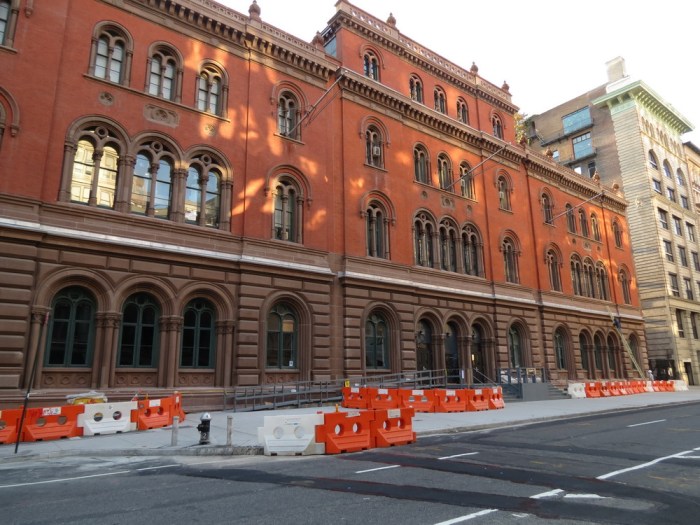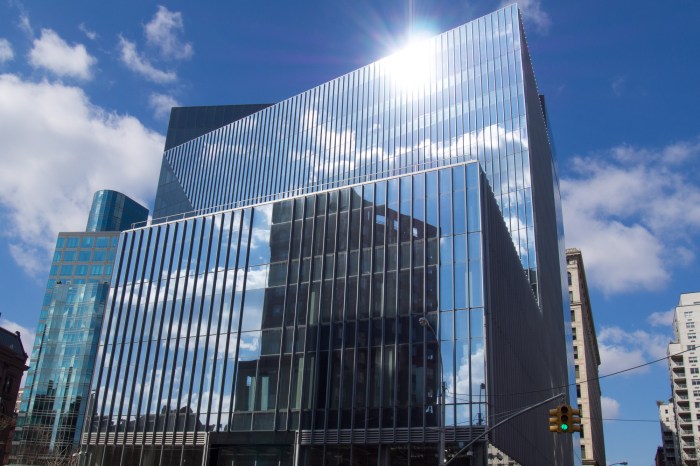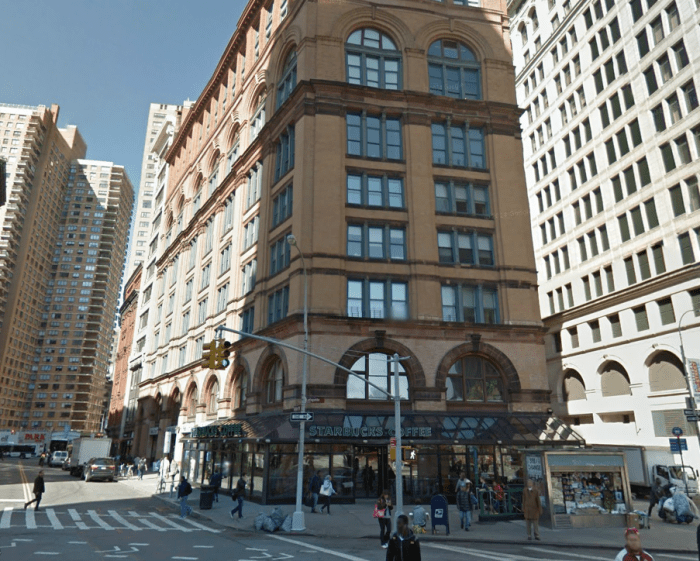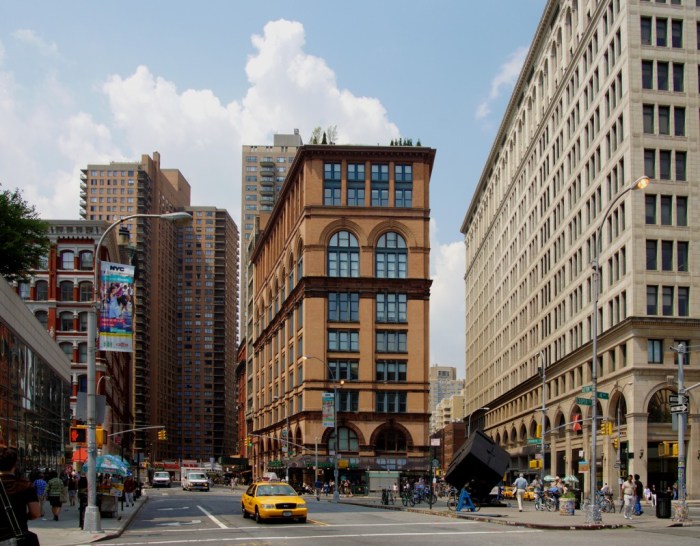Astor Place, a vibrant and eclectic neighborhood in the East Village of Manhattan, is a captivating tapestry of history, culture, and urban living. From its architectural landmarks to its thriving arts scene, Astor Place has something to offer everyone. Immerse yourself in the rich history of this iconic neighborhood, discover its vibrant cultural offerings, and explore the diverse amenities that make it a sought-after destination.
Astor Place History

Astor Place is a vibrant neighborhood located in the East Village of Manhattan, New York City. It derives its name from John Jacob Astor, a prominent businessman and real estate developer who played a significant role in the development of the area in the early 19th century.
Astor Place has a rich and diverse history, having undergone numerous transformations over the years. Initially a residential neighborhood for the wealthy, it gradually evolved into a bustling commercial and cultural hub in the late 19th century. The construction of the Astor Place Opera House in 1847 marked a pivotal moment in the neighborhood’s cultural development, attracting prominent figures from the world of opera and theater.
Architectural Styles and Landmarks
Astor Place is characterized by a diverse architectural landscape that reflects its multifaceted history. The neighborhood boasts a mix of historic buildings, such as the Astor Place Opera House and the Church of the Holy Cross, alongside modern structures and contemporary developments.
- Astor Place Opera House: Designed by architect Isaiah Rogers in the Greek Revival style, the Astor Place Opera House was once a prominent cultural landmark. It hosted the premiere of Verdi’s “Ernani” in 1847 and served as a venue for various theatrical productions until its closure in 1899.
- Church of the Holy Cross: This Gothic Revival church, designed by architect Richard Upjohn, is known for its intricate stonework and stained glass windows. It has been a significant religious and community center in the neighborhood since its consecration in 1854.
- Cooper Union Foundation Building: This National Historic Landmark, designed by architect Frederick A. Petersen, is renowned for its innovative use of cast iron and glass. It has served as an educational institution since its completion in 1859.
Astor Place Culture

Astor Place is a cultural hub that pulsates with creativity and innovation. The neighborhood’s vibrant cultural scene encompasses art galleries, music venues, and theaters, fostering an environment that nurtures artistic expression and intellectual curiosity.
The art galleries in Astor Place showcase a diverse range of contemporary art, from abstract paintings to thought-provoking sculptures. These galleries provide a platform for emerging and established artists to exhibit their work and engage with the public. The neighborhood’s music venues offer an eclectic mix of live performances, from intimate acoustic sets to high-energy rock shows. These venues have played a pivotal role in launching the careers of countless musicians and continue to attract music lovers from all over the city.
Theaters
Astor Place is also home to several renowned theaters, including the historic Astor Place Theatre and the New York Theatre Workshop. These theaters present a wide range of productions, from classic plays to experimental works, attracting theater enthusiasts and critics alike. The presence of these cultural institutions has made Astor Place a destination for art lovers, performers, and anyone seeking intellectual stimulation.
Astor Place Demographics
Astor Place is a vibrant and diverse neighborhood in the heart of Manhattan. It is home to a mix of residents, from young professionals to families and seniors. The neighborhood is also known for its thriving arts and culture scene.
According to the 2020 census, the population of Astor Place was 12,345. The population density is 27,000 people per square mile, which is higher than the average for Manhattan.
Age Distribution
The age distribution of Astor Place is relatively evenly distributed, with a slightly higher proportion of residents in the 25-34 age group. This is likely due to the neighborhood’s proximity to New York University and other colleges and universities.
Income Levels
The median household income in Astor Place is $105,000, which is higher than the average for Manhattan. However, there is a significant amount of income inequality in the neighborhood, with some residents living in poverty and others living in luxury.
Diversity and Inclusivity
Astor Place is a diverse and inclusive neighborhood. The population is made up of people from all over the world, and there is a strong sense of community among residents. The neighborhood is also home to a number of LGBTQ+ organizations and businesses.
Astor Place Real Estate
Astor Place offers a diverse range of real estate options, catering to various lifestyles and budgets. Property values in the area have consistently appreciated, making it a desirable investment destination. Rental rates are competitive compared to other Manhattan neighborhoods, attracting both young professionals and families alike.
Property Values
Property values in Astor Place have witnessed a steady upward trend over the past decade. The median sale price for a one-bedroom apartment is approximately $1.2 million, while a two-bedroom apartment typically sells for around $1.7 million. Townhouses and luxury apartments command even higher prices, often exceeding $3 million.
Astor Place, with its vibrant energy and charming eateries, invites you to immerse yourself in its allure. Elevate your experience with the exclusive benefits of amex platinum , unlocking access to premium dining and cultural offerings. Indulge in culinary delights at Michelin-starred restaurants or catch a captivating performance at one of Astor Place’s intimate theaters, all while enjoying the unparalleled perks that accompany your amex platinum membership.
Rental Rates
Rental rates in Astor Place vary depending on the size and location of the property. On average, a one-bedroom apartment rents for approximately $3,500 per month, while a two-bedroom apartment typically goes for around $4,500 per month. Luxury rentals and penthouses can command significantly higher rents.
Market Trends
The Astor Place real estate market is characterized by strong demand and limited supply. This has led to a competitive market, with properties often receiving multiple offers and selling above asking price. The neighborhood’s proximity to Greenwich Village, the East Village, and SoHo has made it a highly sought-after location for both buyers and renters.
Comparison to Other Neighborhoods
Compared to other Manhattan neighborhoods, Astor Place offers a more affordable option while still providing a vibrant and convenient lifestyle. Property values and rental rates are generally lower than in neighboring areas such as Greenwich Village and SoHo, making it an attractive choice for first-time buyers and budget-conscious renters.
Astor Place Transportation

Astor Place boasts an exceptional transportation infrastructure, catering to diverse commuting needs. Its proximity to major subway lines, coupled with extensive bike lanes and pedestrian walkways, enhances the neighborhood’s connectivity and livability.
Public Transportation
Astor Place is a public transportation hub, with access to several subway lines, including the 4, 5, 6, and 6 Express lines. The Astor Place Station is conveniently located at the intersection of Astor Place and Lafayette Street, providing direct connections to Manhattan, Brooklyn, Queens, and the Bronx. The station also serves as a major transfer point for other subway lines, making it a crucial transportation hub for commuters.
Bike Lanes and Pedestrian Walkways
Astor Place is renowned for its extensive bike lanes and pedestrian walkways, promoting sustainable and healthy transportation options. Bike lanes run along both sides of Astor Place, connecting to the larger network of bike lanes throughout the city. These lanes provide a safe and convenient way for cyclists to navigate the neighborhood and beyond. Pedestrian walkways are also well-maintained and accessible, ensuring a comfortable and safe walking experience.
Impact on Livability and Connectivity
The robust transportation infrastructure in Astor Place significantly enhances the neighborhood’s livability and connectivity. The accessibility of public transportation reduces commuting times and provides residents with convenient access to various destinations within the city. Bike lanes and pedestrian walkways encourage active transportation, promoting a healthy lifestyle and reducing traffic congestion. The neighborhood’s central location and excellent transportation options make it an attractive destination for both residents and visitors.
Astor Place, a vibrant neighborhood in New York City, is a hub for culture and entertainment. While planning your trip, consider using a travel budget calculator to estimate expenses and make informed financial decisions. Astor Place offers an array of attractions, including theaters, music venues, and independent shops, ensuring a memorable and budget-friendly experience.
Astor Place Dining and Nightlife

Astor Place is renowned for its vibrant culinary and nightlife scene, attracting both locals and visitors alike. The neighborhood offers a diverse array of dining options, ranging from casual eateries to fine-dining establishments.
Restaurants
Astor Place is a foodie’s paradise, with a wide selection of restaurants serving cuisines from around the globe. Whether you’re craving Italian, Japanese, Mexican, or American fare, you’ll find something to satisfy your palate. Some of the neighborhood’s most popular restaurants include:
- Ippudo: A renowned ramen shop known for its flavorful broths and handmade noodles.
- Momofuku Ssäm Bar: A modern Korean restaurant specializing in shareable plates and innovative cocktails.
- Minetta Tavern: A classic steakhouse serving prime cuts and a wide selection of wines.
- The Beatrice Inn: A cozy and intimate spot known for its dry-aged steaks and seasonal American cuisine.
- Barbuto: An Italian restaurant focusing on fresh, seasonal ingredients and rustic dishes.
Astor Place Shopping

Astor Place offers a vibrant shopping scene that caters to a diverse range of tastes and budgets. From trendy boutiques and independent retailers to upscale department stores and specialty shops, there’s something for everyone in this eclectic neighborhood.
One of the most popular shopping destinations in Astor Place is St. Mark’s Place, a bustling street lined with vintage clothing stores, record shops, and unique gift shops. Other notable shopping areas include Astor Place itself, home to the historic Astor Place Theatre and a variety of restaurants and boutiques, and Cooper Square, where you’ll find a mix of independent bookstores, art galleries, and home goods stores.
Variety of Retail Stores
Astor Place is home to a wide variety of retail stores, including:
- Department stores: Macy’s, Century 21
- Clothing stores: H&M, Zara, Uniqlo
- Shoe stores: Foot Locker, Nike
- Accessories stores: Claire’s, Charming Charlie
- Home goods stores: Bed Bath & Beyond, Crate & Barrel
- Electronics stores: Best Buy, Apple Store
Boutiques and Specialty Shops
In addition to its retail stores, Astor Place is also home to a number of unique boutiques and specialty shops, including:
- Independent bookstores: McNally Jackson, Three Lives & Company
- Art galleries: White Columns, The Kitchen
- Home goods stores: Fishs Eddy, Coming Soon
- Gift shops: Mudhoney, Spoonbill & Sugartown
- Vintage clothing stores: Awoke Vintage, 10 Ft. Single by Stella Dallas
Impact of Online Shopping
Like many other neighborhoods in New York City, Astor Place has been impacted by the rise of online shopping. However, the neighborhood’s strong sense of community and its focus on independent businesses have helped to mitigate the impact of online retailers.
Astor Place, renowned for its eclectic charm, draws visitors with its vibrant atmosphere. Just a stone’s throw away, nature enthusiasts can immerse themselves in the breathtaking beauty of Anna Ruby Falls , a mesmerizing cascade nestled amidst lush greenery. The falls offer a tranquil escape, inviting contemplation and awe, before returning to the lively tapestry of Astor Place, where the city’s energy and creativity intertwine.
Many of the independent businesses in Astor Place have adapted to the changing retail landscape by offering online shopping and delivery services. Additionally, the neighborhood has seen a growing number of pop-up shops and events, which have helped to create a unique and dynamic shopping experience.
Astor Place Parks and Recreation

Astor Place boasts several green spaces and recreational opportunities that contribute to the community’s well-being and vitality. From tranquil parks to bustling playgrounds, these facilities cater to diverse age groups and interests.
The neighborhood’s crown jewel is Astor Place Park, a historic 0.6-acre sanctuary that serves as a hub for relaxation, socialization, and cultural events. Its lush lawns, towering trees, and iconic fountain create a serene oasis in the heart of the bustling city.
Children’s Playgrounds
Young residents of Astor Place have access to several playgrounds designed to foster their physical and social development. The playground at Astor Place Park features a variety of age-appropriate equipment, including swings, slides, and climbing structures. Additionally, the nearby 5th Street Playground offers a sprayground, basketball courts, and a handball court, providing opportunities for active recreation.
Community Gardens
Astor Place is home to two community gardens that promote environmental stewardship and community engagement. The Elizabeth Street Garden and the Astor Place Community Garden offer plots for local residents to cultivate their own fruits, vegetables, and flowers. These gardens not only provide fresh produce but also serve as gathering places for neighbors to connect and share their gardening knowledge.
Accessibility and Inclusivity
Astor Place’s parks and playgrounds are designed to be accessible and inclusive to all members of the community. The pathways in Astor Place Park are wheelchair accessible, and the playground equipment meets safety standards for children with disabilities. Additionally, the community gardens provide raised beds for individuals with mobility impairments.
The recreational facilities in Astor Place play a vital role in fostering a sense of community, promoting physical and mental well-being, and providing opportunities for recreation and leisure for residents of all ages.
Astor Place Education

Astor Place is home to several educational institutions, ranging from renowned universities to elementary schools. These institutions contribute to the neighborhood’s intellectual and cultural landscape, fostering a vibrant and diverse educational environment.
The neighborhood is home to the New York University (NYU), a world-renowned research university with a significant presence in Astor Place. NYU’s campus offers a wide range of academic programs, attracting students from around the globe. The university’s proximity to Astor Place has a profound impact on the neighborhood’s intellectual and cultural life, with students and faculty actively engaging in the community.
Astor Place also boasts several elementary and middle schools, including the esteemed P.S. 63 and the NEST+m School. These schools provide a strong educational foundation for the neighborhood’s younger residents, contributing to the overall educational attainment and intellectual development of the community.
Quality of Education
The educational institutions in Astor Place are generally regarded as being of high quality. NYU is consistently ranked among the top universities in the world, and its programs are highly respected in various fields. The elementary and middle schools in the neighborhood also maintain a strong academic reputation, with students consistently performing well on standardized tests.
Impact on the Neighborhood
The presence of educational institutions in Astor Place has a significant impact on the neighborhood’s intellectual and cultural landscape. NYU, in particular, attracts a diverse and highly educated population to the area, contributing to the neighborhood’s vibrant and cosmopolitan atmosphere. The university’s research and academic activities also have a positive impact on the community, fostering innovation and intellectual discourse.
Furthermore, the presence of elementary and middle schools in the neighborhood contributes to a strong sense of community and family-friendly environment. These schools provide opportunities for parents and residents to engage with each other and participate in their children’s education, fostering a sense of belonging and shared purpose.
Astor Place Future Development

Astor Place is a vibrant and historic neighborhood in Manhattan, New York City. With its rich cultural heritage and central location, the area has attracted significant interest from developers and investors in recent years. Several development projects and initiatives are underway or planned for the future, which have the potential to transform the neighborhood’s character and livability.
Sustainability and Equitable Growth
As Astor Place continues to grow and develop, it is crucial to ensure that new projects align with the neighborhood’s sustainability and equity goals. This includes incorporating green building practices, promoting affordable housing, and investing in public spaces and infrastructure that benefit all residents. By prioritizing sustainable and equitable development, Astor Place can maintain its unique charm while accommodating future growth.
Mixed-Use Developments
One of the key development trends in Astor Place is the rise of mixed-use projects. These developments combine residential, commercial, and retail spaces within a single building or complex. Mixed-use developments offer several advantages, including increased density, walkability, and a more vibrant street life. They also help to create a more diverse and inclusive neighborhood by providing a range of housing options and amenities for people of different income levels and lifestyles.
Luxury Residential Developments
Another notable development trend in Astor Place is the construction of luxury residential buildings. These high-end developments typically feature spacious apartments, state-of-the-art amenities, and prime locations. While luxury residential developments can contribute to the neighborhood’s tax base and provide housing options for affluent residents, they also raise concerns about affordability and gentrification. It is important to strike a balance between encouraging economic growth and preserving the neighborhood’s affordability and diversity.
Arts and Culture, Astor place
Astor Place has a long history as a center for arts and culture. Several initiatives are underway to preserve and enhance the neighborhood’s cultural heritage. This includes the renovation of the historic Astor Place Theatre, the expansion of the Cooper Union School of Art, and the creation of new public art installations. By investing in arts and culture, Astor Place can continue to attract artists, performers, and visitors, while also fostering a sense of community and identity among residents.
Final Summary

Astor Place is a neighborhood that truly has it all. Whether you’re an art enthusiast, a foodie, or simply looking for a vibrant and welcoming community, Astor Place is sure to captivate your senses and leave a lasting impression. As the neighborhood continues to evolve, it’s an exciting time to be a part of its rich tapestry. So come, explore the many facets of Astor Place and discover why it’s one of Manhattan’s most beloved neighborhoods.
Questions and Answers
What is Astor Place known for?
Astor Place is known for its vibrant cultural scene, architectural landmarks, and diverse dining and nightlife options.
What is the history of Astor Place?
Astor Place was originally a residential area developed by John Jacob Astor in the early 19th century. It became a cultural hub in the late 19th and early 20th centuries, with the establishment of theaters, art galleries, and music venues.
What are the transportation options in Astor Place?
Astor Place is well-connected by public transportation, with access to the 6, N, and R subway lines. There are also numerous bus routes and bike lanes in the neighborhood.